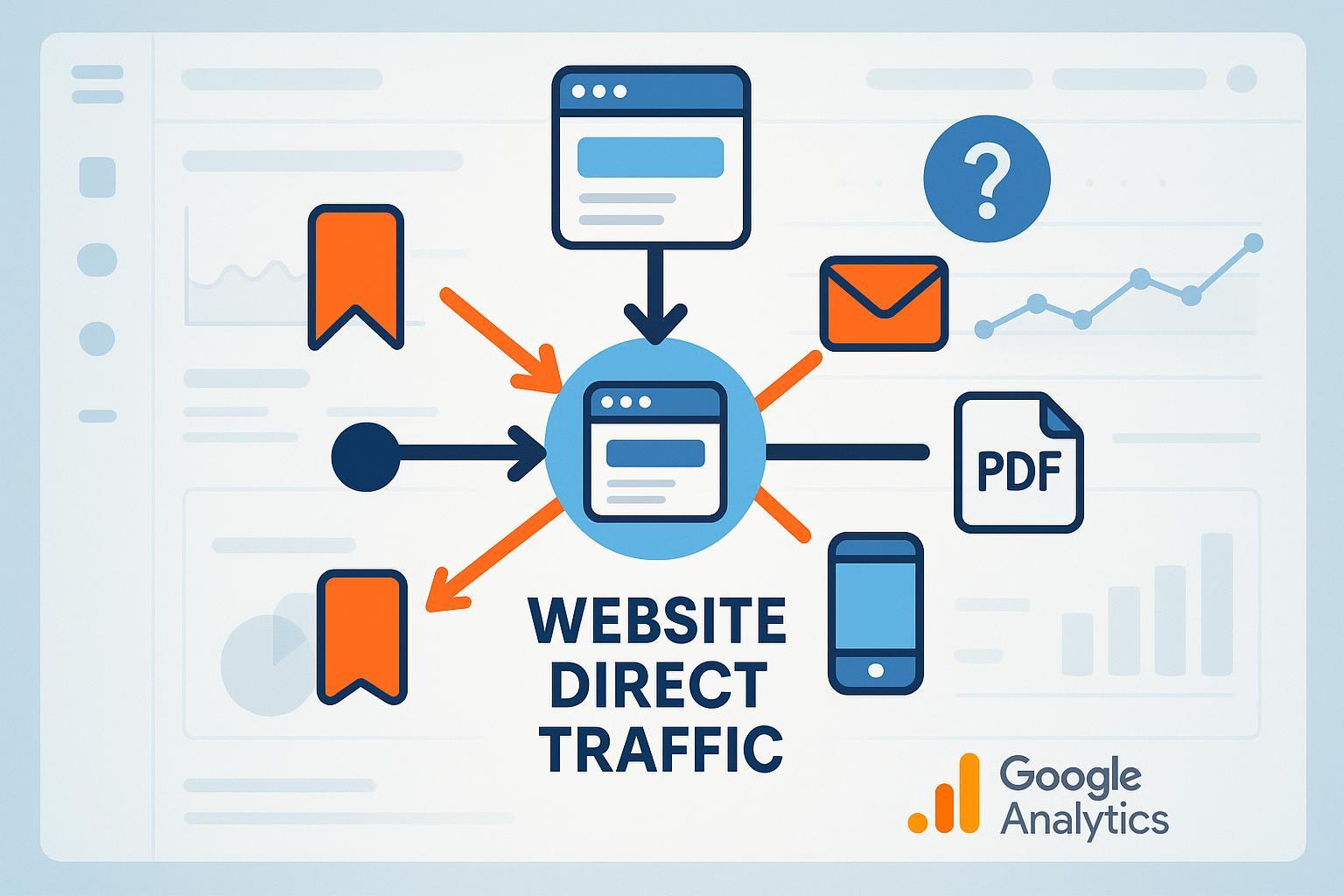Understanding Direct Traffic in Google Analytics: What It Really Means for Your Website

What Is Direct Traffic in Google Analytics?
Direct traffic in Google Analytics refers to website sessions where the traffic source or referrer cannot be determined—most often when a visitor types the URL directly, uses a bookmark, or comes from sources where no referral data is passed (Google Support).
Detailed Explanation: More Than Just URL Entry
While many believe that direct traffic only represents users manually typing your address or clicking a bookmark, it's actually a broader “catch-all” category for any visit where Google Analytics is unable to trace how the user landed on your site. This includes legitimate direct visits and traffic from untrackable sources, such as:
- Clicking a link in a PDF, Word document, or offline file
- Links shared via many mobile and social apps (which may not pass referral info)
- Emails or SMS messages without UTM tracking
- Transitions from HTTPS to HTTP pages (stripping referral data)
- Privacy settings or browser/security extensions blocking source info
- Faults in campaign tracking or missing Google Analytics tags
Technical Note: In GA4, session source determination is event-based, but the core logic for assigning “direct/none” remains: no valid referrer and no recognized UTM campaign parameters means the session becomes direct (MonsterInsights).
Key Components & Causes of Direct Traffic
- Direct URL Entry: User manually types your web address.
- Bookmarks & Shortcuts: Returning via browser bookmarks or desktop/mobile shortcuts.
- Unattributable External Sources: Clicking links in files (PDFs, docs), desktop software, or apps that don’t provide standard referrer data.
- UTM/Tracking Failures: Missing or incorrect campaign parameters result in misattribution.
- Referrer Loss: Caused by HTTPS to HTTP, privacy tools, or some redirect chains.
Real Example
A retail company emails a newsletter with untagged links. Recipients click, but without UTMs, Google Analytics logs the surge as Direct—obscuring the campaign’s true value. When UTM parameters are added, campaign-attributed traffic increases and direct drops correspondingly.
Direct vs. Organic vs. Referral Traffic (Side-by-Side Comparison)
| Feature | Direct Traffic | Organic Traffic | Referral Traffic |
|---|---|---|---|
| Defined By | No referrer/UTM | Recognized search engine | External referring site |
| Common Sources | Typed URL, bookmarks, | Google, Bing, Yahoo search | Blogs, news sites, forums |
| untagged emails/docs/apps | |||
| Trackable via UTMs | No (unless misconfigured) | Yes (for paid search, etc.) | Yes (overrides referrer) |
| GA4 Reporting Name | "direct / (none)" | e.g., "google / organic" | "referral" |
| Example | User bookmarks homepage | Search for your product | Article link to your site |
Key Takeaway: Direct traffic is NOT always intentional or “highly engaged”—a spike can mean tracking/misconfiguration issues.
Diagnosing High Direct Traffic: Action Checklist
- Audit Campaign Links: Are all email, QR code, and social links tagged with full UTM parameters?
- Review Offline Channels: Are you running print/email/file campaigns missing UTMs?
- Check for Tracking Breaks: Is your GA tag present and firing on all pages?
- Analyze Referrer Loss Points: Is there HTTPS to HTTP traffic, or app/social sources that strip referrer?
- Investigate Internal Traffic: Exclude employee or agency logins.
- Watch for Bot/Spam Activity: Rule out bot spikes masquerading as direct.
Common Myths & Gotchas
- Myth: "Direct means my brand is so strong people type my URL" – Not always true; technical issues inflate direct numbers.
- Myth: "Direct is better quality traffic" – Not necessarily; misattribution can hide poor-performing sources.
Related Concepts
- Organic Traffic: Visits from unpaid search engine listings.
- Referral Traffic: Clicks from other websites tracked via referrer data.
- UTM Parameters: Code used in URLs to properly attribute source and campaign in analytics.
- Session Source & Medium: The classification Google Analytics uses to label where/what brought the session.
In Summary
Direct traffic in Google Analytics is more than just "typed or bookmarked" visits—it's often a signal that a significant chunk of your site's activity can't be correctly attributed due to tracking, technical, or privacy-related issues. Marketers should regularly review, tag, and audit all inbound links to minimize unaccounted-for direct sessions—and unlock the full story behind their website traffic.

